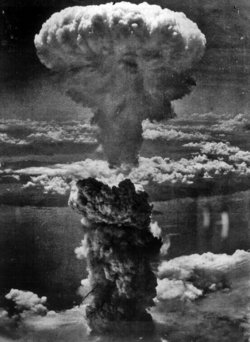Robert Dreyfuss is the author of Devil's Game: How the United States Helped Unleash Fundamentalist Islam (Henry Holt/Metropolitan Books, 2005). Dreyfuss is a contributing editor at The Nation, a contributing writer at Mother Jones, a senior correspondent for The American Prospect, and a frequent contributor to Rolling Stone.He can be reached through his website: www.robertdreyfuss.com.
The Pentagon’s latest Quadrennial Defense Review, the fancy name for the Defense Department’s “big think” strategy that is supposed to come out every four years, has to be seen as the Bush administration’s ultimate Plan for Empire. It lays out a Thirty Years' War-type battle plan for an expanding U.S. military presence worldwide, to fight a war against an enemy which is, at most, a few hundred strong.
Officially, Secretary of Defense Rumsfeld calls it “The Long War,” a propaganda term designed to echo “the Cold War,” and the Pentagon intends to brainwash Americans into supporting a generation-long struggle that will lay the groundwork for an American hegemony in the 21st century. It is, indeed, the Project for a New American Century.
According to The New York Times, alongside the QDR, the Pentagon has developed its own (classified) counterterrorism strategy. It is this mission, designed to combat an enemy that the Bush administration describes as equal in magnitude to the threat posed by German Nazism or Soviet communism, which is driving both the QDR and the huge expansion of the budget for the Defense Department and the U.S. intelligence community over the next few years. The QDR is the neoconservatives’ mythical World War IV, in line-item form.
Of course, it ignores the fact that the blunt instrument of the U.S. military is precisely the wrong tool to use against radical right Islamist forces. As the war in Iraq has proved to everyone but the most hard-core neoconservative, ham-handed U.S. military attacks in Muslim countries create more terrorists than they kill. The Times , in reporting the Pentagon’s counterterrorism plan, quotes a Defense Department official involved in writing it who points out:
...the American military’s effort to aid tsunami victims in southeast Asia and to assist victims of Pakistan’s earthquake did more to counter terrorist ideology than any attack mission.
Does that mean that the Pentagon will recommend a multinational Marshall Plan-style effort to provide economic security, housing and health care for the impoverished in Asia, the Middle East and Africa? Hardly—although such a program wouldn’t cost more than the $1 trillion Iraq-Afghanistan war effort, and would unquestionably do far more to calm passions, soothe anti-Americanism and dry up Al Qaeda’s recruitment pool. No, the Pentagon is proposing a vast, multi-year campaign of wars, commando raids, air strikes, military bases, naval expansion, covert actions and other military operations whose sum can only be seen as an imperial expansion of the U.S. presence around the globe.
According to the Los Angeles Times , a core element of the Long War is an increase in the size and strength of the elite U.S. military forces, including “secret Delta Force operatives skilled in counterterrorism,” Army Special Forces battalions, Navy SEAL teams, “the creation of a new SOF [Special Operations Forces] squadron of unmanned aerial vehicles to ‘locate and target enemy capabilities’ in countries where access is difficult,” “civil affairs and psychological operations units,” and “a 2,600-strong Special Operations force for training foreign militaries, conducting reconnaissance and carrying out strikes.”
These forces, says the Los Angeles Times , “will have the capacity to operate in dozens of countries simultaneously.” The QDR says: “The long war against terrorist networks extends far beyond the borders of Afghanistan and Iraq and includes many operations characterized by irregular warfare.” It outlines expanded U.S. military operations in Kenya, Ethiopia, Djibouti and the Horn of Africa; in the trans-Sahara region and Niger to “combat emerging terrorist extremist threats”; the “Plan Colombia” anti-drug counterinsurgency; etc. And it concludes: “Long-duration, complex operations involving the U.S. military … will be waged simultaneously in multiple countries around the world, relying on a combination of direct (visible) and indirect (clandestine) approaches.”
The QDR, says the Pentagon, is specifically designed as a 20-year battle plan. It is generational in scope. “The Defense Department unveiled the Quadrennial Defense Review today, charting the way ahead for the next 20 years as it confronts current and future challenges and continues its transformation for the 21st century,” according to the official unveiling:
Since the attacks of Sept. 11, 2001, our nation has fought a global war against violent extremists who use terrorism as their weapon of choice, and who seek to destroy our free way of life. Our enemies seek weapons of mass destruction and, if they are successful, will likely attempt to use them in their conflict with free people everywhere. Currently, the struggle is centered in Iraq and Afghanistan, but we will need to be prepared and arranged to successfully defend our nation and its interests around the globe for years to come.
So once again, President Bush is trying to scare us about the threat of terrorists with WMD, just as he did before the war in Iraq, even though not a single terrorist in history has ever come close to possessing WMD and even though the Bush administration has not documented a single instance of a serious effort by terrorists to acquire weaponized chemical or biological agents—never mind a nuclear device.
A hapless Ryan Henry, the Defense Department’s deputy undersecretary for policy, sounded befuddled as he tried to rationalize the Long War. It was, he said, “fuzzy”:
U.S. forces in all probability will be engaged somewhere in the world in the next decade where they're not currently engaged. But I can tell you with no resolution at all where that might be, when that might be or how that might be. Things get very fuzzy past the five-year point.
Fuzzy.
And the fuzzy math used to calculate how much all this will cost sees the Pentagon’s bloated budget soaring toward half a trillion dollars per year, not counting perhaps a $100 billion surcharge for the ongoing fiascos in Iraq and Afghanistan. While the Bush budget slashes non-defense spending, Pentagon spending—already huge after successive post-9/11 increases—will rise another 7 percent to $439 billion, not including Iraq, and not including a ballooning budget for the CIA and the Department of Homeland Security. It’s a shocking misallocation of resources, one that makes a mockery of the fact that the Cold War is long over and that the world is mostly at peace. At peace, that is, except for wars of America’s own making.







No comments:
Post a Comment